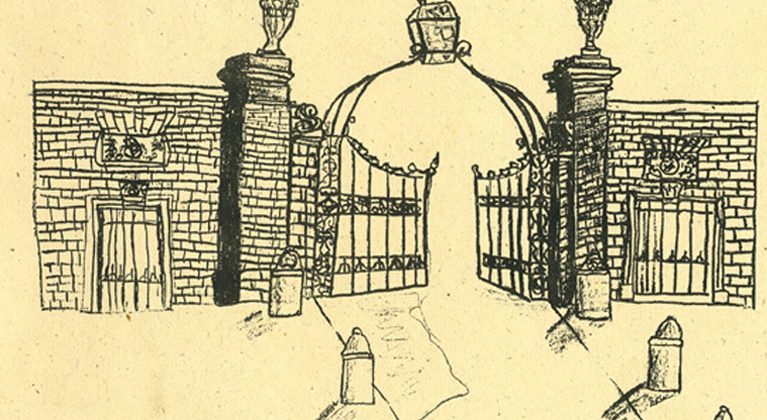I have been asked about integrating aspects of architectural history into K-12 curricula, which is something I did on a very small scale when my kids were in elementary school in the 1990s. I never went so far as to align the activities we did with state standards, but that’s because I worked closely with teachers.
First, I looked at what the American Institute of Architects (AIA) had done with their Built Environment Education (BEE) curriculum. Searching for it now in 2010, it seems that others have taken it up, because there are a lot of hits online. But Alan Sandler, with whom I corresponded, wrote an article in Art Education (v. 42, no. 5, pp. 13-16) in 1989 called, “Learning by Design: The AIA Elementary and Secondary Education Program.” Illustrated with drawings of buildings by children, the article lays out the steps that the AIA took to integrate principles about the built environment into established curriculum, using teacher training, activity development, and networking. Locally, in Champaign, Gary Olsen and Michele Olsen and their office created the Architeacher program, which still seems to be a going concern.
With young children, awareness and appreciation of the natural and built environments and their interactions, as well as visual thinking and observation skills are probably as, if not more important, than any mastery of content.
For my daughter’s class, we began by measuring the classroom. We then had to scale down the measurements in order to draw the plan, and we made symbols for doors and windows. These steps involve vocabulary building, math and drawing. We talked about how one classroom connected to the hallway, and all the other parts of the building.
I had taken photographs of details of buildings near the elementary school where my daughter went. These were mostly pictures of windows, roof details, foundation stones, porch columns, and doors, which I mounted on poster board and laminated. Groups of about five children and an adult then went on a treasure hunt to match the photos with the buildings around the school, following a map that I gave to each adult leader. Each group headed in a different direction to find their own “treasures.”
There are lots of other activities that relate to buildings and history and connect to basic skills for elementary-level students:
- The game of “Blockhead” helps kids learn about shapes, loads and balance
- Children can find shapes, lines, textures, colors and patterns in pictures of buildings
- School children can make rubbings of different building materials
- Older children can make bridges and learn about spans and load-bearing structures
- “Sidewalk superintendents” can learn a lot by visiting a construction site
- Similarly, students can visit an historic house, an architect’s or contractor’s office
Leal School teachers Colleen Brodie and Nancy Coombs published two books with their classes: Children, Architecture, and History: A Child’s Walking Tour Guide of Urbana (1989-90) and then A Child’s Guide of the University of Illinois at Urbana-Champaign (1990-91). They include drawings and information about buildings on campus and in Urbana.
Nowadays there are a great many more books available (and easily searchable!), but here are some of the ones I collected, obviously in no particular order:
Forrest Wilson, What It Feels Like to be a Building (1995), ages 4-8
Wilson, The Joy of Building: Restoring the Connection between Builder and Architect (Van Nostrand Reinhold Co, 1979), older kids
Most of David Macaulay’s books http://www.davidmacaulay.com/
Fagg, Sington, How They Built Long Ago
MacGregor, Skyscrapers: A Project Book
Goldreich, What Can She Be? An Architect
Haldane, Faces on Places: About Gargoyles
Balthasar Korab, Archabet: An Architectural Alphabet Postcard Book (Preservation Press, 1992)
Diane Madex, Architects Make Zigzags: Looking at Architecture from A to Z (Wiley, 1986)
Katharine Jones Carter, Houses (1982)
Harriet Langsam Sobol, Pete’s House (1978)
Cobb/Strejan, Skyscraper Going Up
Carter Harman, A Skyscraper Goes Up
Ingoglia, The Big Book of Real Skyscrapers
Jane D’Alelio, I Know that Building: Discovering Architecture with Activities and Games (National Trust for Historic Preservation, 1989)
Paolo Donati(illus) and Philip Wilkinson, Amazing Buildings (Dorling Kindersley, 1993)
Stephen Biesty’s Incredible Cross-sections (Knopf, 1992)
The Center for Children’s Books, one of the research centers at the Graduate School of Library and Information Science at Illinois, has many resources available to help expand these ideas.

